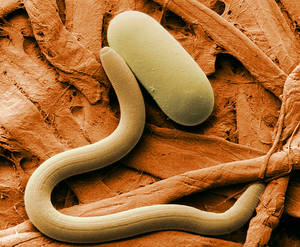For many, the idea of a bacterial infection in an open wound sounds like the worst possible scenario. And often it is, but there are cases where the right bacterium at the right time can actually save your life. Because as the bugs slug it out for access to the injured area, the ensuing microbial warfare can reap rewards for the wounded in the form of enhanced healing and fewer infections with mainstream pathogens...
Wound infections are common because they offer the perfect place for many bacterial species to thrive: they are warm, moist, harder for the immune system to access and, inevitably, the breakdown of damaged tissue yields a steady supply of growth-fuelling raw materials that microbes can make use of.
The problem of wound infection is exemplified nowhere better than on the battlefield where, throughout history, soil- and shrapnel-contaminated injuries have rendered soldiers much more likely to die from an infection than a bullet.
Of course, not all victims of such wound infections suffered a death sentence. There were survivors. But in the First World War, those that did survive frequently had a feature in common: wounds that glowed in the dark. Not only that, but their fluorescing tissues appeared to heal more cleanly and more quickly than the unilluminated wounds of their counterparts. And because it offered better survival prospects to the victims, this mysterious phenomenon became known as the "Angel's Glow".
Today, it is thought that the effect is most likely to have been caused by a naturally-luminescent bacterium called Photorhabdus luminescens. This soil-dwelling microbe produces a number of deadly products that can kill off competing potential pathogens, but is itself harmless to humans. Naturally, the afflicted soldiers had no idea that the glow was caused by a beneficial bacterial infection and instead interpreted it as the gift of survival from God, handed to them by by angels, hence the name.
But in more recent times, further research into this organism, which is the only non-marine bacterium discovered that is capable of luminescence, has since shed some light on the cause of the glow. It's all part of a symbiotic relationship between the bacterium and its insect-eating host.
 This is because Photorhabdus lives in the guts of nematode worms, which survive by hunting down insect larvae that live in the soil and on the stems and leaves of plant.
This is because Photorhabdus lives in the guts of nematode worms, which survive by hunting down insect larvae that live in the soil and on the stems and leaves of plant.
When they snare a victim, the nematodes burrow into the blood vessels of the larva before regurgitating their Photorhabdus passengers, which promptly dispense a cocktail of chemicals that quickly kill the insect.
But apart from inbuilt insecticides, amongst the substances produced by Photorhabdus are also antibacterial agents that suppress the growth of other microbial species within the insect carcass, leaving Photorhabdus and its host nematodes to feed, grow and multiply unchallenged.
But as the food runs low, the bacteria re-colonise the guts of the nematodes in preparation for the next insect larva that is hunted down. And here's the clever part - the glow imparted to a parasitised insect is thought to lure in other insect prey.
Interestingly, this same relationship between nematode worms and Photorhabdus luminescens can even be used as an alternative to chemical insecticides in some plant species. The bacteria and worms can be cultured using dog food, then harvested and sprayed onto valuable plant species to protect them from insect infestation. This means the bacteria are not only good at protecting humans from potentially lethal infections, but they may also have a role in protecting the food we eat as well...
- Previous Evolution Through the Looking Glass
- Next Southern Right Whales










Comments
Who discovered P. luminescens
Who discovered P. luminescens?
hey, i am just curious to
hey, i am just curious to know, was the load of Photorhabdus luminescens in the wounds so high that the glow could be seen through the naked eye? or Photorhabdus luminescens has a high capacity to glow?
I believe so!
I believe so!
Add a comment